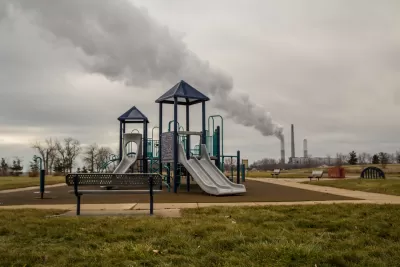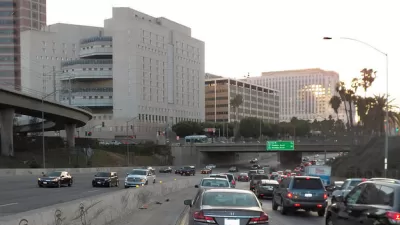With the signs of climate change all around, the effects of the Trump administration's environmental regulation rollbacks look increasingly dire.

Nadja Popovich and Brad Plumer share the news about a new report by the Rhodium Group that quantifies the effect of the Trump administration's environmental rollbacks in terms of climate emissions. In total, the Trump administration's environmental rollbacks will emit an additional 1.8 billion metric tons of climate emissions equivalent to carbon dioxide by 2035.
The article includes infographics that provides scale to the data revealed by the report, including a breakdown of emissions by type—methane for oil and gas operations, methane for landfills, hydrofluorocarbons, fuel efficiency standards, and removing California's vehicle emissions authority. The two largest sources of emissions enabled by Trump administration policies are the methane for oil and gas operations, at 592 million metric tons of carbon dioxide equivalent, and the California vehicle authority, at 573 million metric tons.
For perspective, Popovich and Plumer report that the total 1.8 billion metric tons of carbon is more than the combined emissions of Canada, Germany, and Britain. The article also notes that the report only accounts for some of the potential effects of Trump administration environmental policies: more changes are still in the works, like the Energy Department's "plans to change federal rules that would have required more efficient light bulbs," and the decision to repeal and replace the Obama-era Clean Power Plan. "It is unclear what effects [the Clean Power] move will ultimately have," according to Popovich and Plumer. "Many states have been retiring coal plants and shifting to cleaner alternatives recently — because of the falling cost of natural gas, wind and solar power — and were already beating the targets set by the Obama-era rule."
Additional coverage of the Rhodium report is available from Ben German for Axios.
FULL STORY: What Trump’s Environmental Rollbacks Mean for Global Warming

Maui's Vacation Rental Debate Turns Ugly
Verbal attacks, misinformation campaigns and fistfights plague a high-stakes debate to convert thousands of vacation rentals into long-term housing.

Planetizen Federal Action Tracker
A weekly monitor of how Trump’s orders and actions are impacting planners and planning in America.

In Urban Planning, AI Prompting Could be the New Design Thinking
Creativity has long been key to great urban design. What if we see AI as our new creative partner?

King County Supportive Housing Program Offers Hope for Unhoused Residents
The county is taking a ‘Housing First’ approach that prioritizes getting people into housing, then offering wraparound supportive services.

Researchers Use AI to Get Clearer Picture of US Housing
Analysts are using artificial intelligence to supercharge their research by allowing them to comb through data faster. Though these AI tools can be error prone, they save time and housing researchers are optimistic about the future.

Making Shared Micromobility More Inclusive
Cities and shared mobility system operators can do more to include people with disabilities in planning and operations, per a new report.
Urban Design for Planners 1: Software Tools
This six-course series explores essential urban design concepts using open source software and equips planners with the tools they need to participate fully in the urban design process.
Planning for Universal Design
Learn the tools for implementing Universal Design in planning regulations.
planning NEXT
Appalachian Highlands Housing Partners
Mpact (founded as Rail~Volution)
City of Camden Redevelopment Agency
City of Astoria
City of Portland
City of Laramie




























